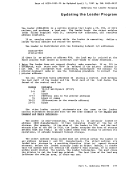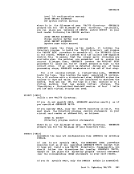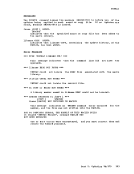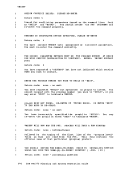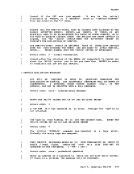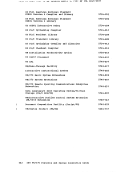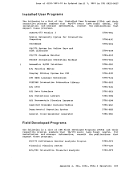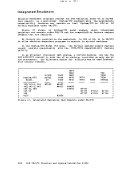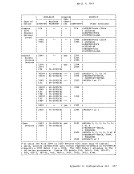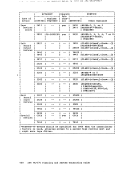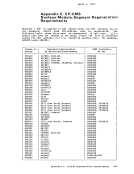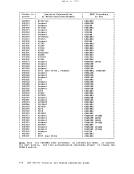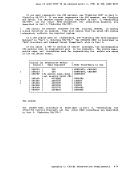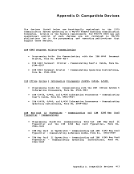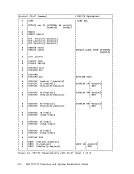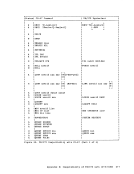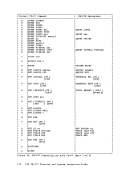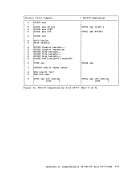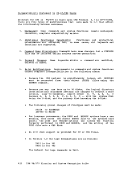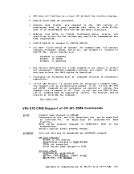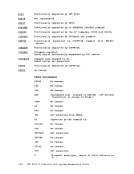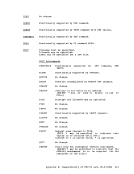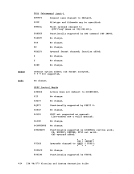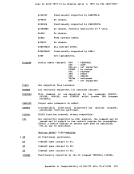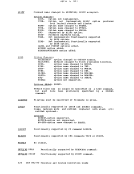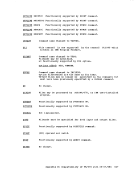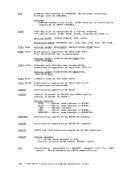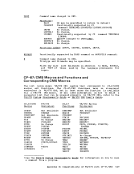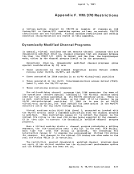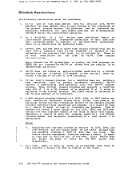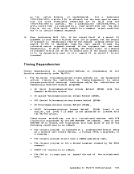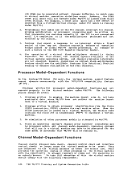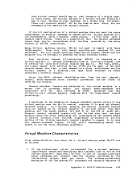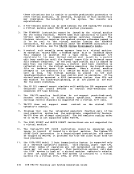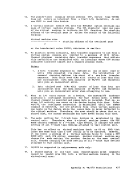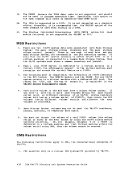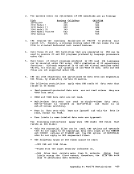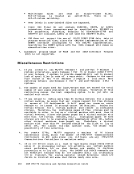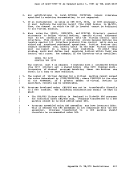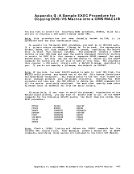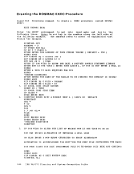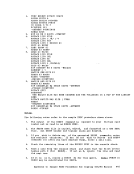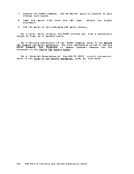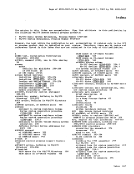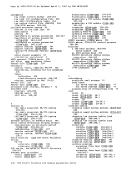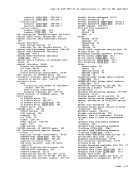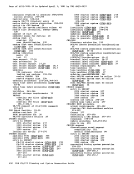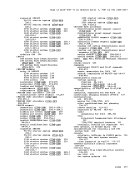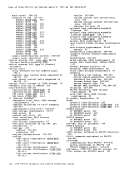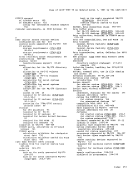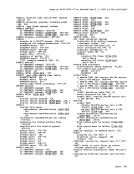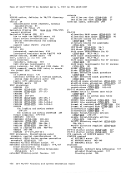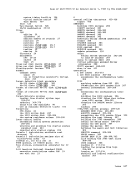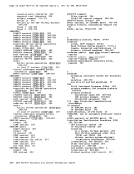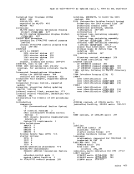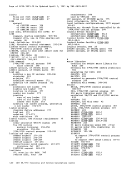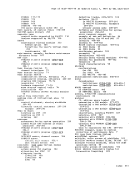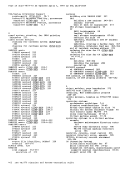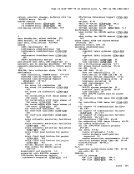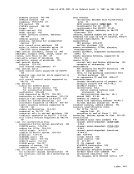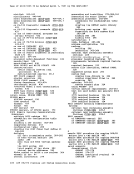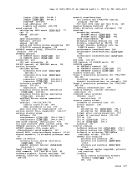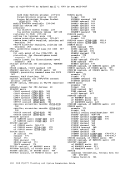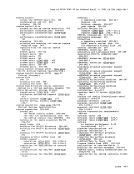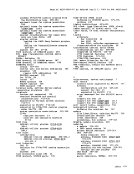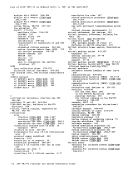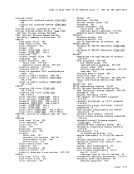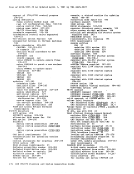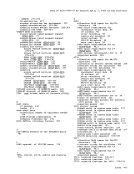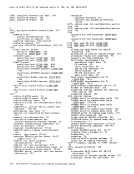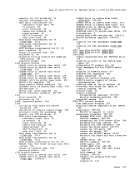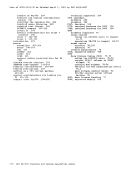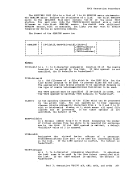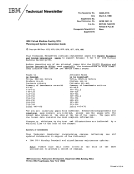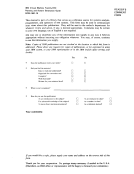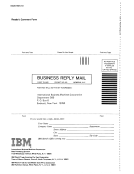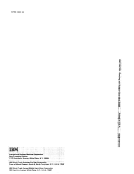The channel mode
channel zero can
CHANNEL command.CPUID bbbbbb
DirectoryProgram setting for all channels
be changed by the use of
except virtual
theCP DEFINE
provides a unique processor identification(CPUID) to be
stored in response to theSTIDP instruction. It is necessary
to associate a uniqueCPUID with each virtual machine that is
attached to anMSC port since solicited/unsolicited messages
are directed to the host system in the virtual environment by
means of theCPUID. There is no checking by VM/370 to ensure
that all virtual machines using theSET CPUID command have
specified unique processor serials. The hexadecimal fieldIbbbbbb
i is the processor identification number. The
processor identification number (serial) is only a portion of
the completeCPUID. The CPUID identification stored in
response to aSTIDP instruction is a string of 16 hexadecimal
digits shown as follows:
aabbbbbbccccdddd
aa is the version code; theseX'FF' to identify that the
underVM/370. two digits are forced to
virtual machine is running
bbbbbb is up to 6 hexadecimal digits that indicate the
processor identification number; this field is set by
the directoryOPTION statement values or modified by
theSET CPUID command.
cccc is the model number; this field contains a high order
o digit followed by the three digits of the model
number (0-9). This field defaults to the model number
of the real machine.
dddd is the machine check extended logout; this field is
forced toX'OOOO' since CP does not reflect machine
checks to the virtual machine.
If theCPUID was not specified by means of the SET CPUID command or the OPTION control statement, the CPUID stored as a
result of theSTIDP instruction is the real CPUID with the
first two digits set toX'FF' and the last four digits set to X'OOOO' (present CPUID logic). A processor serial of more
than six digits on theSET CPUID command results in an error
message.
A processor identification number (serial) of less than six
hexadecimal digits results in zeros being padded to the left
of the number. A three-byte field in theVMBLOK (VMCPUID) contains the value set as a result of invoking this DIRECTORY option. AFFINITY nn
is 2 decimal digits between00 and 63 that specify that
virtual machine execution is to be performed on a designated
processor (nn). This attribute is only applicable in theVM/370 attached processor environments. Any hexadecimal value
from00 to 3F is a valid main or attached processor address;
however, the value selected must match the preset values
established for your installation's main and attached
processor when the system was installed. If theAFFINITY option is not selected, then the virtual machine is serviced Part 2. Defining Your VM/370 System 205
channel zero can
CHANNEL command.
Directory
be changed by the use of
except virtual
the
provides a unique processor identification
stored in response to the
to associate a unique
attached to an
are directed to the host system in the virtual environment by
means of the
that all virtual machines using the
specified unique processor serials. The hexadecimal field
i
processor identification number (serial) is only a portion of
the complete
response to a
digits shown as follows:
aabbbbbbccccdddd
aa is the version code; these
under
virtual machine is running
bbbbbb is up to 6 hexadecimal digits that indicate the
processor identification number; this field is set by
the directory
the
cccc is the model number; this field contains a high order
o digit followed by the three digits of the model
number (0-9). This field defaults to the model number
of the real machine.
dddd is the machine check extended logout; this field is
forced to
checks to the virtual machine.
If the
result of the
first two digits set to
than six digits on the
message.
A processor identification number (serial) of less than six
hexadecimal digits results in zeros being padded to the left
of the number. A three-byte field in the
is 2 decimal digits between
virtual machine execution is to be performed on a designated
processor (nn). This attribute is only applicable in the
from
however, the value selected must match the preset values
established for your installation's main and attached
processor when the system was installed. If the





















































































































































































































































































































































































































